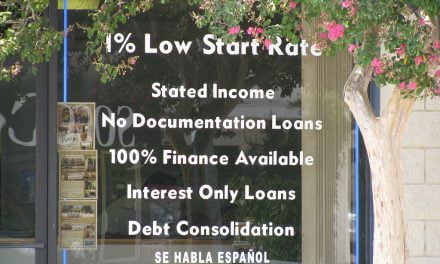Google’s new mortgage comparison tool is easy to use and straightforward. But is it enough for homebuyers searching for the best mortgage?
What Google Compare Mortgages does
Google’s recently introduced mortgage shopping tool helps homebuyers shop for the most competitive mortgage.
To use the tool, the homebuyer visits the Google Compare Mortgages website. They will need their:
- mortgage purpose (e.g. purchase or refinance);
- value of the property they are interested in purchasing;
- down payment amount;
- credit score range;
- estimated time length for owning the property (this is optional—if the homebuyer selects a short time period, the tool may suggest an adjustable rate mortgage (ARM));
- desired monthly housing payment (this is optional); and
- bankruptcy or foreclosure history (this is optional).
This calculator also includes the option to claim eligibility for VA-guaranteed mortgages, which reduces the mortgage interest rate.
Google then shows the homebuyer their recommended mortgage product. The homebuyer may also browse all mortgages for which they may qualify based on the information provided to Google. Customer reviews are available for each lender.
The mortgage details included are the:
- bank(s) which offers that mortgage;
- mortgage interest rate;
- annual percentage rate (APR);
- various mortgage fees required and their amounts;
- amount of fees and interest payments to be made over the life of the mortgage or for the length of time the homebuyer indicates they plan to own the property; and
- monthly payment, including any mortgage insurance.
Finally, the homebuyer may request the lender contact them.
Our Google Compare Mortgages review
This is the second financial comparison product to be offered by Google, with the rollout of Google Compare for auto insurance earlier in 2015. Like their auto insurance tool, their mortgage comparison tool is motivated by the potential income generated by ads.
Essentially, each of these mortgage options act as advertisements for the lender. Google receives money when the mortgage shopper asks the lender to contact them for more information about the mortgage. Since mortgages represent significant investment potential for the bank, the ad money potential is — likewise — significant.
How does Google decide which lenders to advertise? Zillow and LendingTree provide the interest rates, lender reviews and other details. Therefore, if LendingTree covers the bank, it ought to show up in Google Compare Mortgage’s search results. According to Google, this includes over 200,000 local and national mortgage lenders.
While this ad set-up isn’t necessarily a bad thing for homebuyers, it’s crucial for homebuyers using this service to be aware that Google is receiving money to basically steer a homebuyer toward certain lenders. Thus, Google is neither an indifferent observer in the process nor does it have a due diligence obligation to the homebuyer, as does their real estate agent.
Editor’s note — Google Compare Mortgages is actually a mortgage brokerage in California, endorsed and regulated by the California Bureau of Real Estate (CalBRE). While they do not offer mortgages themselves, they are licensed to cover all legal possibilities, according to The Financial Brand.
Since Zillow supplies Google’s lender reviews, the first step a mortgage loan originator (MLO) can take to be included in the search results is to create a Zillow account and indicate they are a mortgage lender. Then, the MLO can request reviews from past clients by following Zillow’s instructions.
Likewise, MLOs can also register to join LendingTree. Registration costs money, which varies based on “market demand,” according to the site. However, it puts the MLO in the running to be matched with a homebuyer using Google Compare Mortgages.
The good thing about Google Compare Mortgages is that it simplifies the mortgage shopping experience for homebuyers — it takes about 60 seconds to complete the questionnaire and receive mortgage recommendations. Thus, homebuyers are more likely to shop around in the first place.
Further, with all the mortgage terms and fees laid out one after the other, the bank is pressured to put its most competitive offer forward so as not to lose the homebuyer’s business to another lender.
Google Compare Mortgages is great for exposing homebuyers to shopping around for the most competitive mortgage and the one that’s most appropriate for their finances. However, it’s important to stress this is just the first step the homebuyer ought to take in selecting a mortgage. For the best advice on mortgage shopping, homebuyers can turn to those legally bound to represent their best interests — their CalBRE licensed and endorsed real estate agent.
Related articles:
CFPB releases mortgage shopping worksheet for your buyers
The Mortgage Shopping Worksheet — assist your homebuyer to close with the most competitive lender














